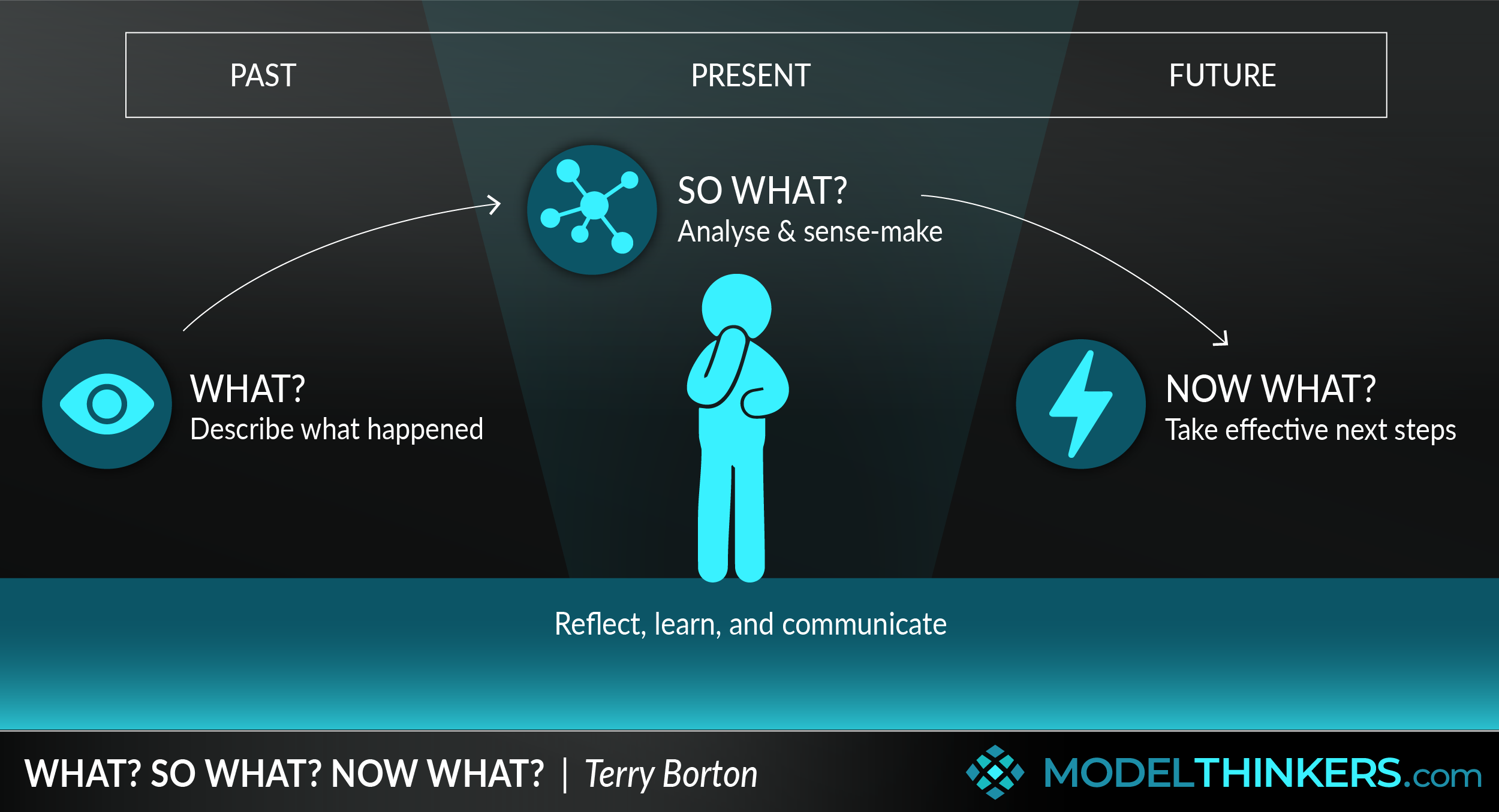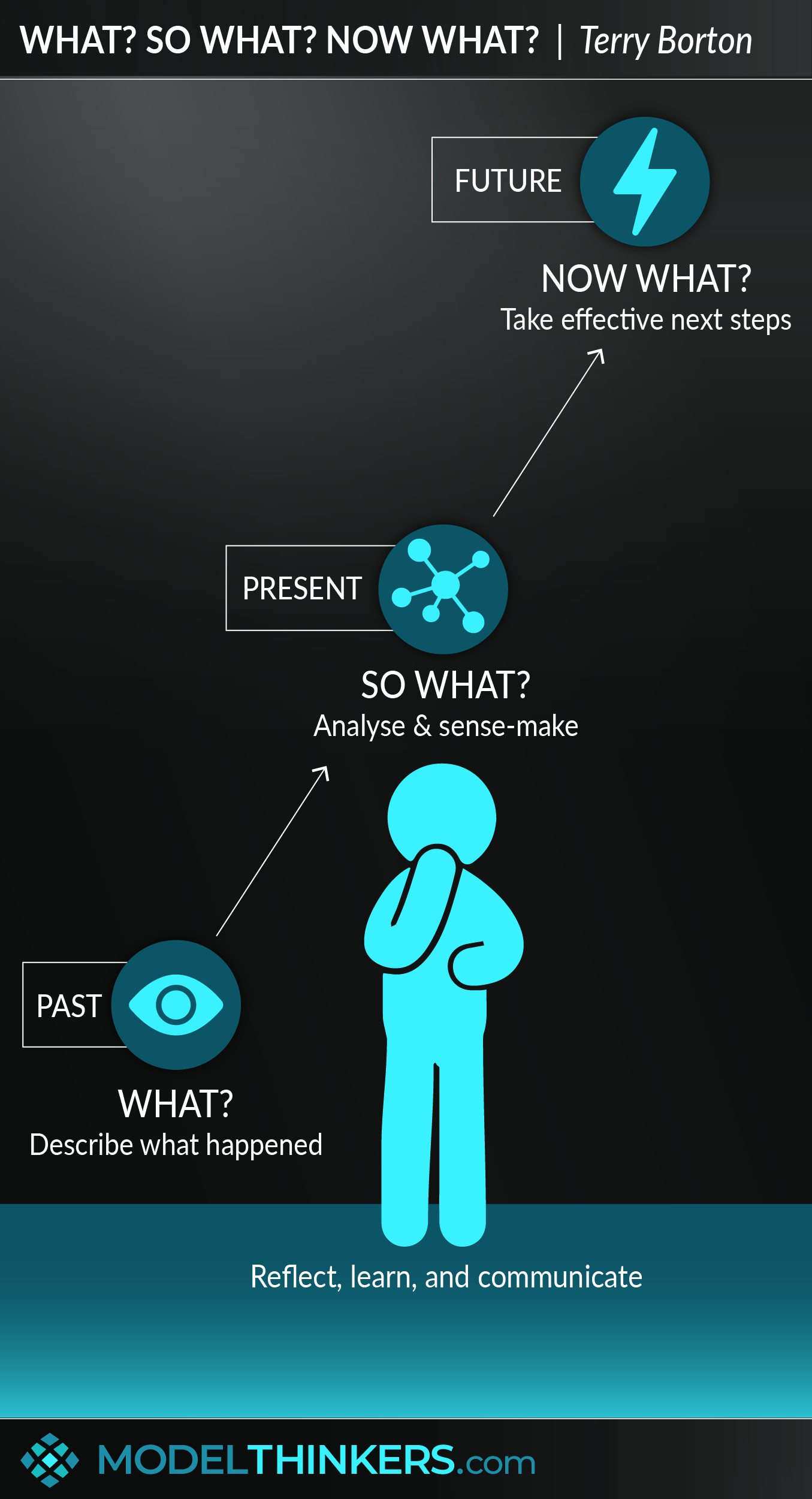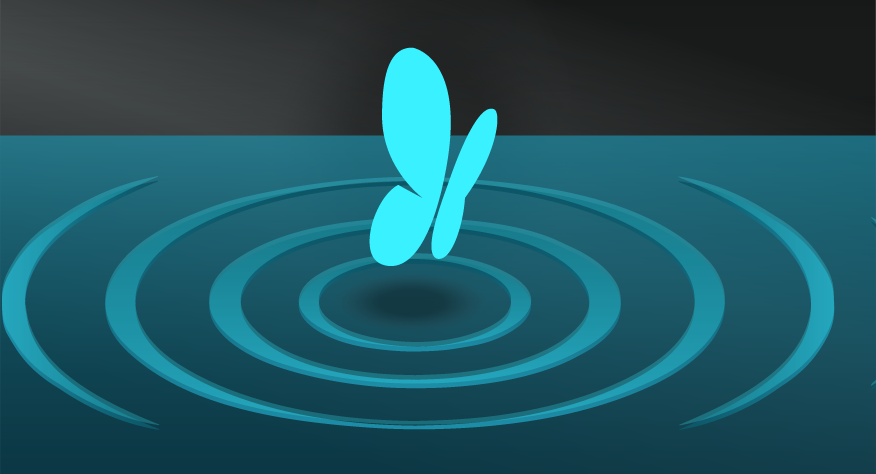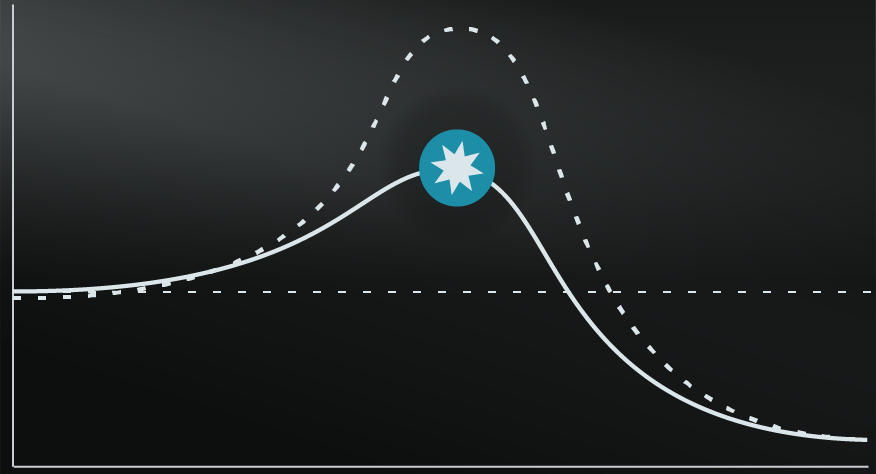

 0 saved
0 saved
 246.3K views
246.3K views








This model was created by Terry Borton as a group facilitation technique in the 1970s before it was popularised as a reflective tool for clinical healthcare practitioners in the 1980s. Since then, it remains a simple and effective reflective, learning, and communication technique.
The What? So What? Now What? approach involves asking ‘what’ happened by describing the facts of an event; ‘so what’ by analysing, sense-making, and drawing insights from the event; and ‘now what’ by applying your lessons for effective next steps.
REFLECTION BASICS.
Educator John Dewey captured it best when he noted “We do not learn from experience... we learn from reflecting on experience.” Reflection involves thinking about our past experiences to identify lessons that will inform our future actions. A simple reflective practice has been shown to boost performance, for example, a research project with call centre workers showed that 15 minutes of daily reflection led to 23% performance improvement, similar results have been demonstrated in more complex work, especially in the health sector (see Origins and Resources for links).
The What? So What? Now What? method has proved to be a popular reflection choice because it’s simple to remember and apply. It can be used in group sessions, for project retrospectives, as part of training interventions, coaching and mentoring conversations, and even as a communication or storytelling framework to structure reports and presentations.
EXAMPLE QUESTIONS.
Let’s break down the three 'whats' and consider possible questions you might ask in each stage.
|
STAGE |
FOCUS |
POSSIBLE QUESTIONS |
|
WHAT? |
Past: |
|
|
SO WHAT? |
Present: |
|
|
NOW WHAT |
Future: |
|
LAUNCH YOUR REFLECTION HABIT.
After you read this summary, be sure and go back and read about Habit Loops. Embedding a habit of reflection will improve your effectiveness, learning, and productivity, so consider which cues you can use to trigger your reflection routine.
For example, you might initiate a 10m reflection routine when you have a coffee, when you turn off your computer, or even when you board the train to go to the office. The point is to incorporate these 'what' questions into your routine. Beyond personal application, you can also consider how to embed reflection into your team and collaborative work by scheduling retrospectives and project reflections using the same questions.
IN YOUR LATTICEWORK.
This approach will work best when you apply First Principles in the ‘What?’ section to challenge and let go of assumptions as you focus on the facts. Try digging deeper to understand the So What by applying the Five Whys and/or the Fishbone Diagram to dig into the root cause.
It's one of the methods you can use to explore Double Loop Learning, particularly if you use ‘So What?’ questions to challenge your existing mental models. It also has close links to other reflective and learning techniques including Black Box Thinking, the OODA Loop, and ultimately the Scientific Method.
Beyond reflection and learning, also consider using this approach as a simple storytelling and communication technique, complementing models such as the Hero’s Journey, the Rule of Three, Minto’s Pyramid and SCQA, and Aristotle’s Rhetoric. The approach also has links to Spotify’s DIBB Framework, which is the company's data-driven approach to communication and decision making.




-
Embed a reflection habit or embed it in your process.
We've already cited some of the studies that demonstrate the power of regular reflection, so how will you embed it into your life and teams? Consider building it into a Habit, for example using the cue of having a cup of coffee or closing your computer for the day to trigger these three questions. Similarly, consider how to embed it into the work you're doing with your team with regular retros or project reflection sessions.
-
Ask What? And define what happened in the past.
Focus on the facts and try to remain objective. Explore the external facts and what was happening for you, including the actions you took in the situation.
-
Ask So What? To analyse what happened, sense-make, and extract lessons.
Look for patterns, analyse and interrogate the facts by exploring the root cause and potential insights. Be prepared to generate hypotheses that reflect your current interpretation.
-
Ask Now What? To establish your future actions.
Let your insights and learning inform your future actions. Consider running tests or experiments to test your hypotheses or current understanding as you cycle through the process again.
Some criticise this approach because of its focus on external events over internal and self-reflection, however, we’d argue that it can incorporate a level of self-reflection with the right questions, some of which we’ve captured in our summary above.
Others might criticise this approach as a reflective approach because it sacrifices depth and an expanded view for the sake of being ‘pithy’ and short. For example, other reflective practitioners might include additional stages exploring feelings, evaluations, conceptualisation etc..
Driscoll’s application to Clinical Practice.
This approach is often attributed to John Driscoll who applied the approach to medical clinical practitioners in 1994. It was again emphasised in nursing by Professor Gary Rolfe and his colleagues in a 2001 paper.
d
This approach is often attributed to John Driscoll who wrote about it as early in the mid-1980s in relation to medical clinical practice, before publishing his 2007 paper entitled Practicing clinical supervision: a reflective approach for healthcare professionals. However, Driscoll’s work clearly built on Terry Borton’s 1970 encapsulation of the model in his book, “Reach, Touch, and Teach: Student Concerns and Process Education,” so we have attributed it to Borton.
The study referenced in the overview above of reflective practice boosting the performance of call centre workers can be found in this paper entitled Making Experience Count, and further impacts of reflection in health care can be explored here.
 My Notes
My Notes
Oops, That’s Members’ Only!
Fortunately, it only costs US$5/month to Join ModelThinkers and access everything so that you can rapidly discover, learn, and apply the world’s most powerful ideas.
ModelThinkers membership at a glance:






“Yeah, we hate pop ups too. But we wanted to let you know that, with ModelThinkers, we’re making it easier for you to adapt, innovate and create value. We hope you’ll join us and the growing community of ModelThinkers today.”



























































































